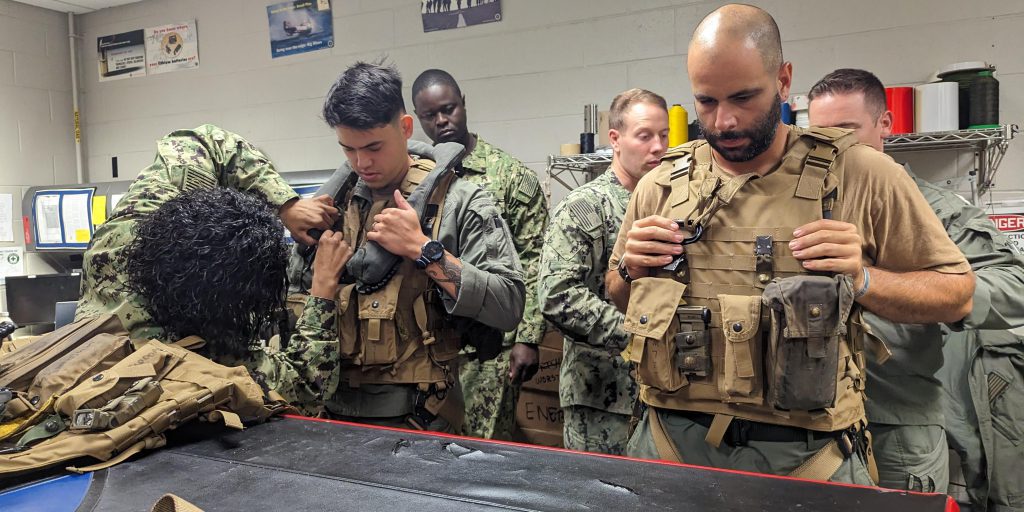The Naval Aircrew Systems Program Office (PMA-202) aircrew survival vest team is testing new rotary wing and tilt aircrew survival vest systems that will optimize aircrew performance with a lighter, less bulky, and more ergonomically suitable solution.
The team is evaluating the new vest systems for their ability to reduce instances of overheating, increase overall comfort, and reduce the potential for short- and long-term back and neck injury of pilots and aircrew due to the bulkiness and imbalanced weight of the legacy systems.
“As mission lengths continue to increase, it’s imperative that we integrate new design features and provide vest systems that meet fleet requirements in a comfortable, lightweight solution,” said Capt. Carey Castelein, PMA-202 Program Manager.


